Last June, I visited the oldest French national park. Parc National de la Vanoise, founded in Savoie in 1963, covers the heart of the third-highest mountain massif in France (after Mont Blanc and Ecrins). Vanoise is full of rocks, marmots, ibex, chamois, eagles, rhododendron thickets, and a smorgasbord of alpine plants. When I was there, they were all in flower. We’ll come back to the flowers; first, some history.
Of the eight national parks in mainland France, this was my third.1 But I couldn’t have told you this at the time. If you’re American, like me, “national park” conjures up a very specific idea: an iconic, clearly delineated, federally managed nature park with ticket booths and campgrounds and park rangers, free of private property and resource extraction. French national parks, like European nature in general, are less easily defined. You don’t always know that you’re in one.
The Vanoise park was born out of a nature reserve which had been created 20 years before, in the 1940s, at the behest of ibex (bouqetin) hunters who had noticed that, funnily enough, the ibex were almost gone. They were inspired by the neighboring Italian reserve, Gran Paradiso, created in 1856 to give ibex populations a reprieve. A ban on hunting on the French side would allow the successfully re-establishing ibex to replenish the French Alps.
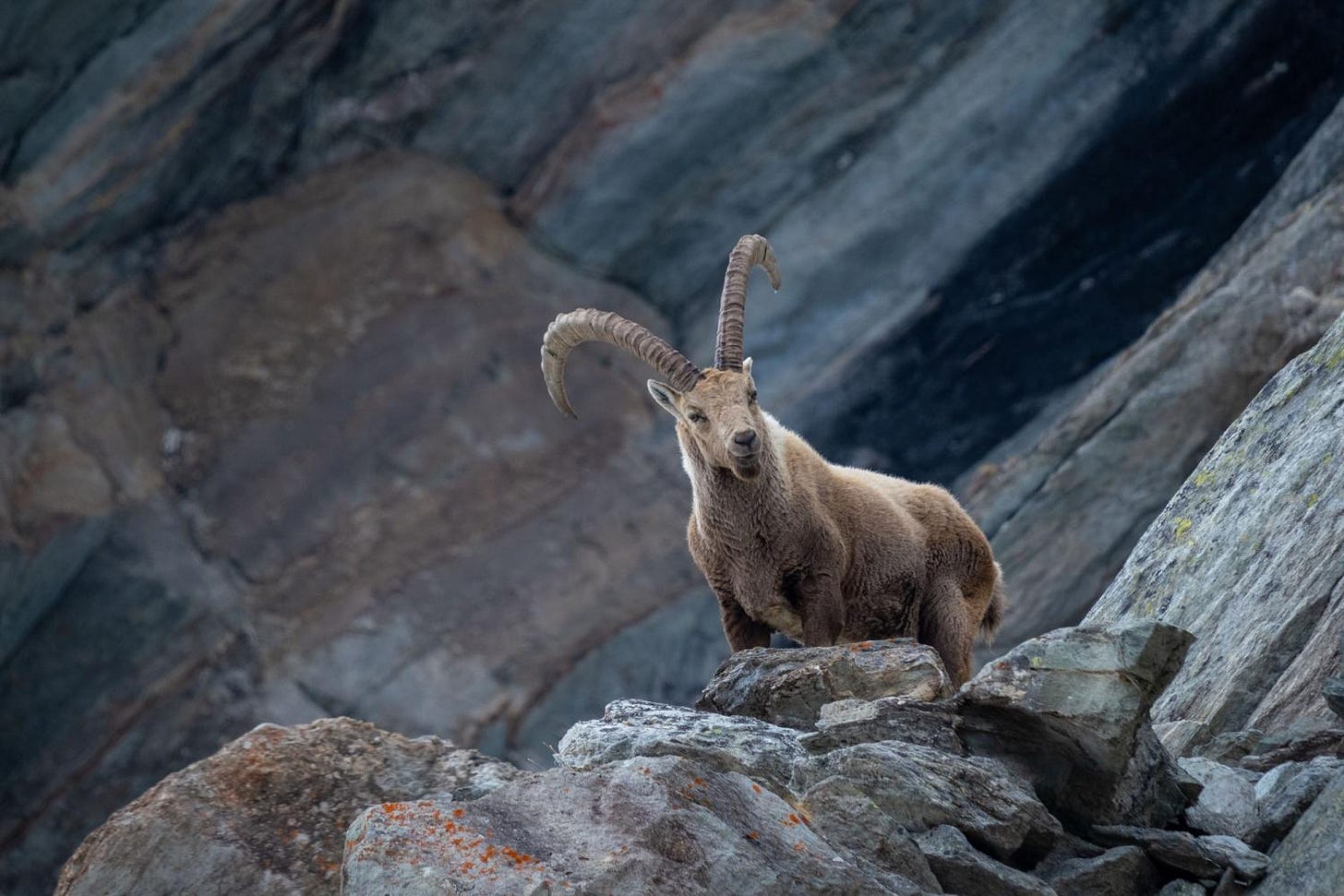
Together, Gran Paradiso and Vanoise now make one of the largest protected areas in Western Europe. However, the utilitarian founding values of the chasseurs blended uneasily with the national park movement that took up the baton in the 1960s. Tricky, too, was the fact that people lived here, and the park would include whole villages.

I visited Vanoise as part of a field work team. Until we were in the park, I didn’t have any concept of it as one. There was no marker at the border. The park maps were complex, with several types of border lines and shading, distinguishing the cœur of the park, the core or “heart,” from the outer peripheries—the villages and their grazing land—and some in-between bits of medium-level nature reserve.
We were here to set up a string of biodiversity monitoring plots along an elevational gradient, starting in one of the valley nature reserves, and ending in the heart of the park at 2500 meters. (You can read more about the project here, and about past field seasons here and here. ) We would stay overnight at a high pass on the heart’s border.
While the others hiked from the nature reserve parking lot, I got a four-wheel-drive ride up the steep, rocky trail in an official park truck driven by a park employee and erstwhile botanist, Vincent. (This proved to be an excellent opportunity to practice French.) Vincent realized halfway up that the key to the car topper with all the gear in it was missing, and we went back to the parking lot and I found the key on the ground and was hailed as a hero.
The first plots would be staked down on rhododendron-blanketed slopes above a glacial valley. We parked below the ridge, attempted to encircle the car with chicken wire so that marmots wouldn’t come and chew the brake lines in half, discovered the chicken wire wasn’t long enough, shrugged (or grumbled) and started tramping up the ridge to locate a good place for the first plot. It was treacherous ground, consisting mostly of large boulders whose contours—and the gaps between them—were screened by the copious rhododendron shrubs. I was soon left behind as I picked my way through the minefield of holes and magenta flowers, and I’m still astounded that my teammates, charging recklessly along like chamois, came through with ankles intact. Laying measuring tapes along the slope, “digging” holes for soil sensors, and erecting camera trap poles all proved near impossible.
The rhododendron flowers were lovely, though.


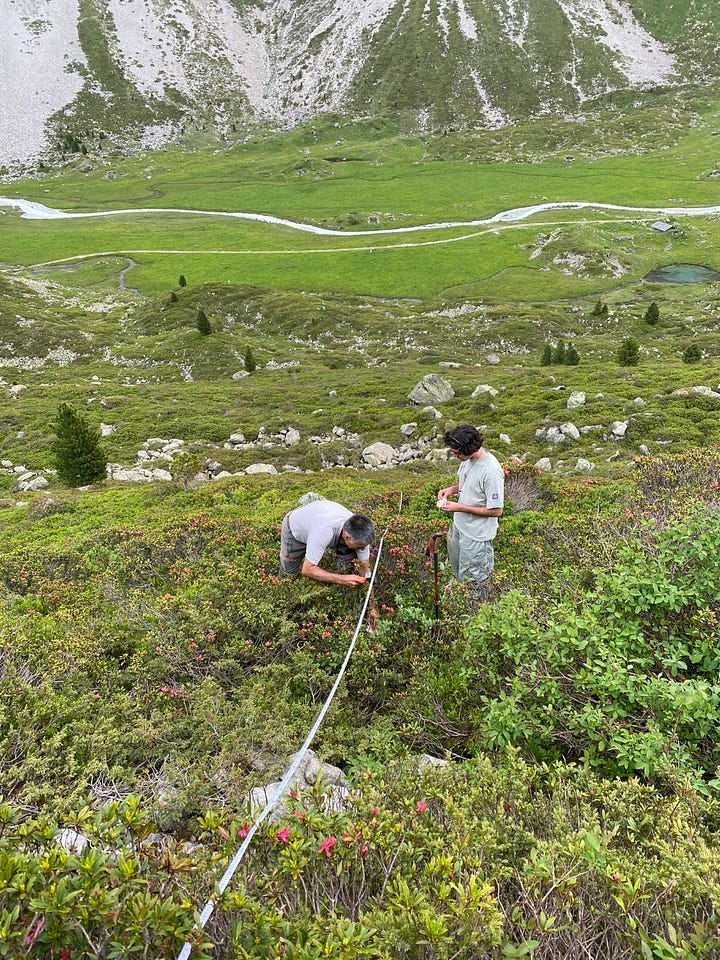
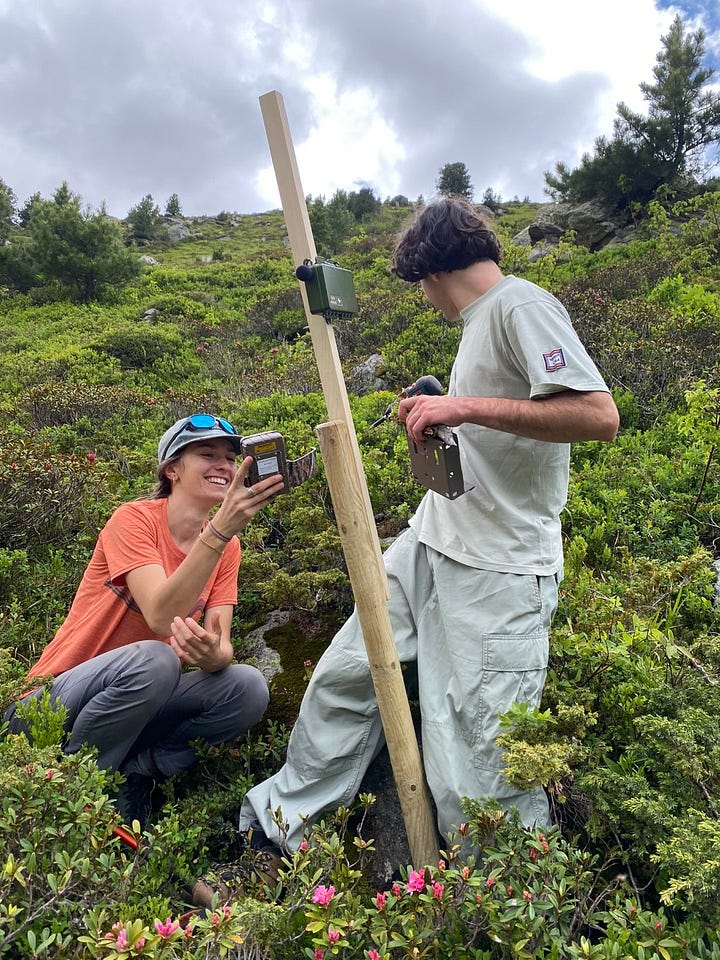
We walked along the valley’s glacier-melt stream, churning and chalky blue and unusually high for the season, to the Refuge du Saut, the bunkhouse where we would stay the night. We had one more site to install on a grassy slope above the refuge, a first taste of the floral bounty: Succulent sempervivum and saxifrage nestled in boulder cracks; woolly edelweiss (Leontopodium nivale) peering out from under juniper; deep blue gentians at the trail’s edge; nodding flyaway heads of pasqueflowers (Pulsatilla vernalis) gone to seed, looking down on the valley; sunny cinquefoil (Pontentilla); creamy clusters of eightpetal mountain-avens (Dryas octopetala); carnivorous alpine butterwort with graceful mouths and sticky leaves; dwarf snow willows (Salix reticulata) with silvery stems curled against the ground.
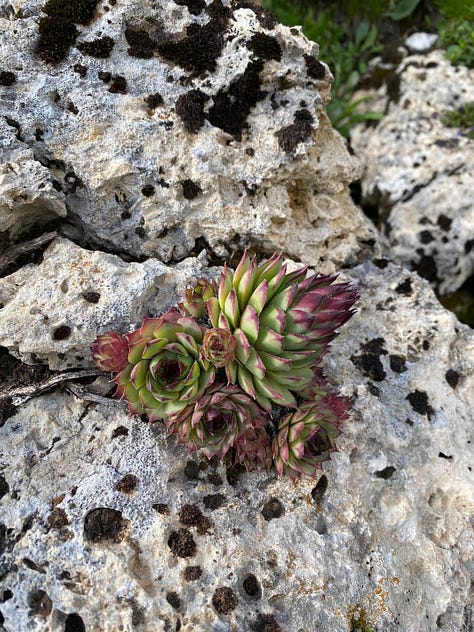
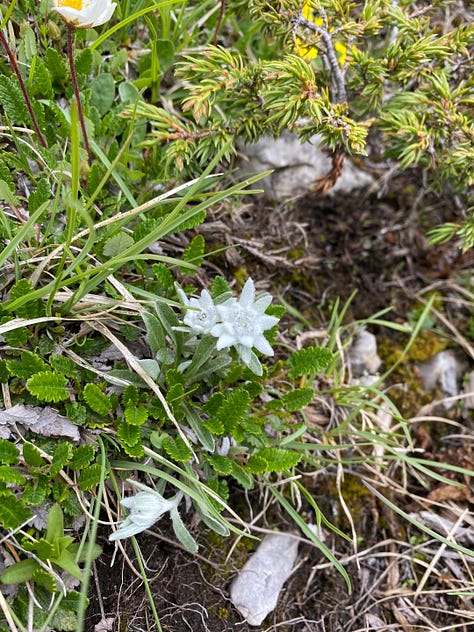
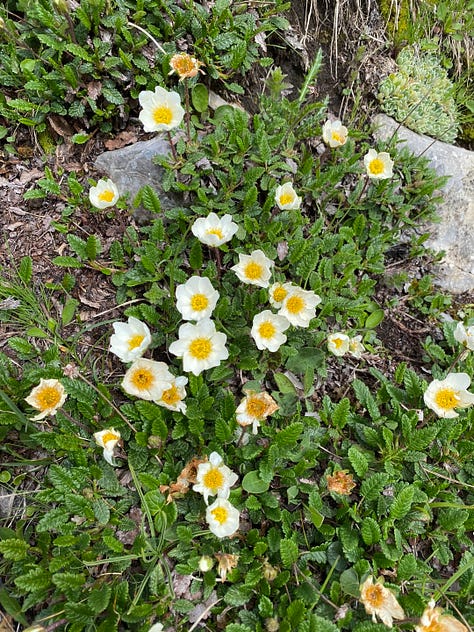
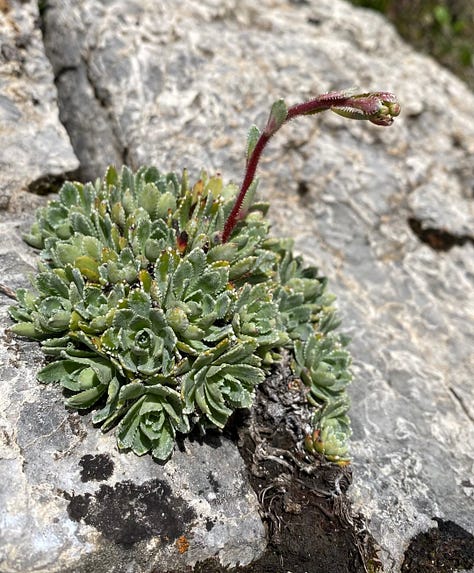
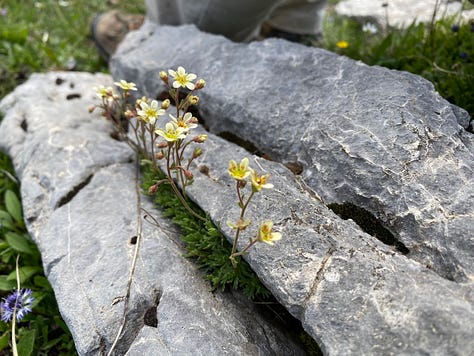
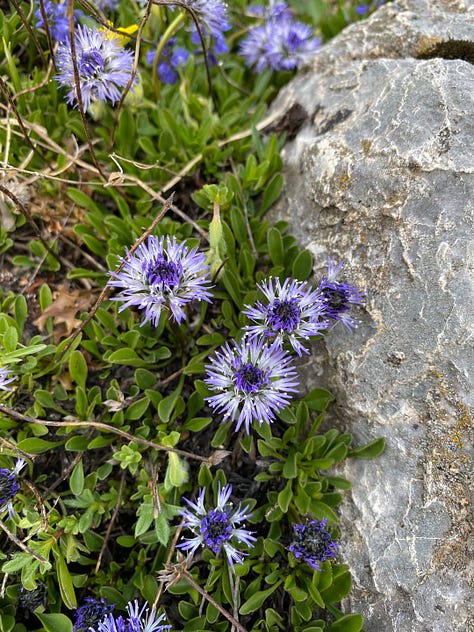
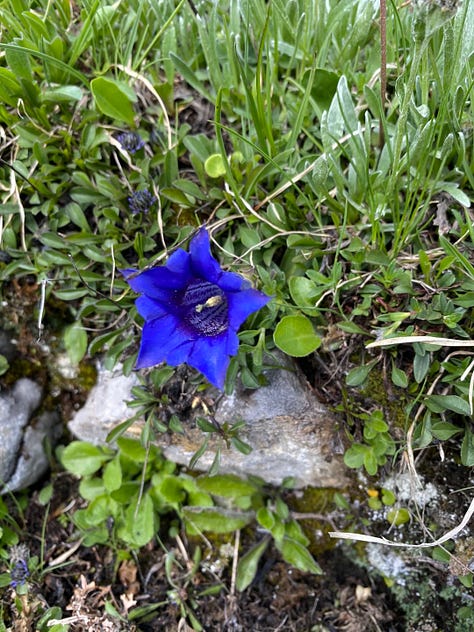
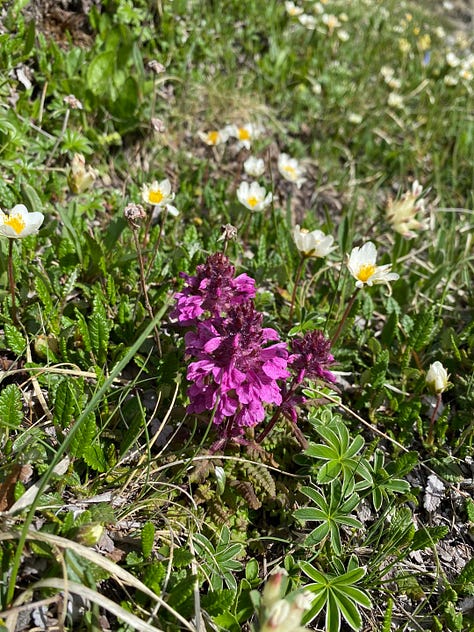
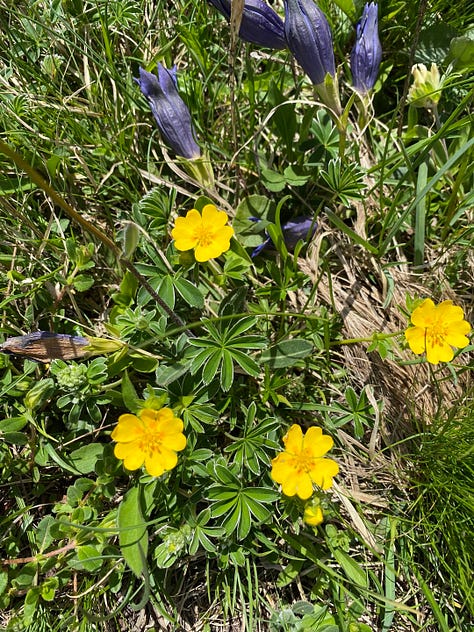
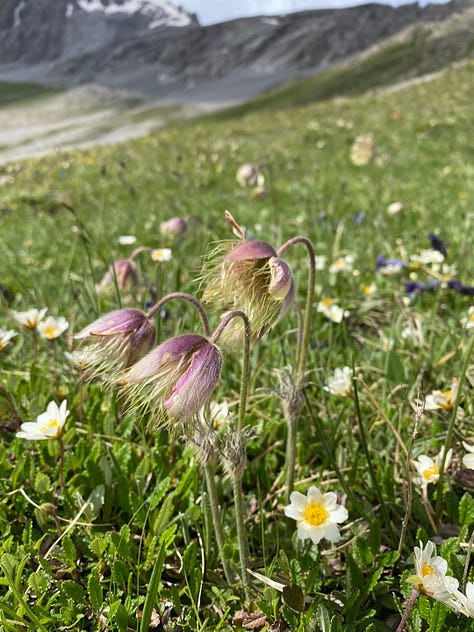
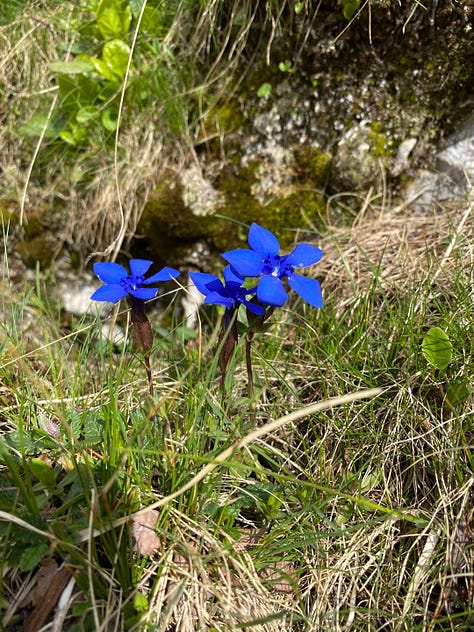
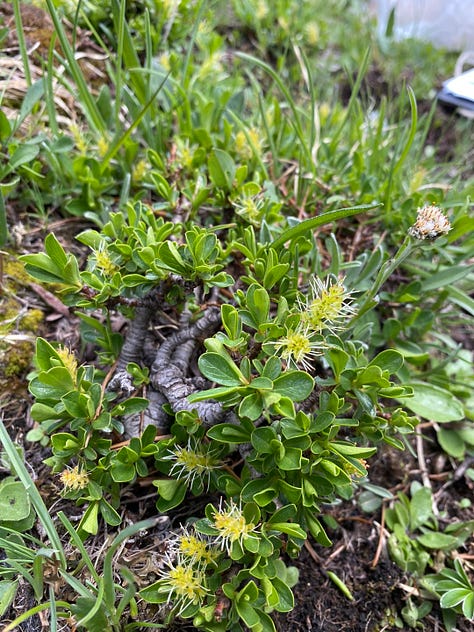
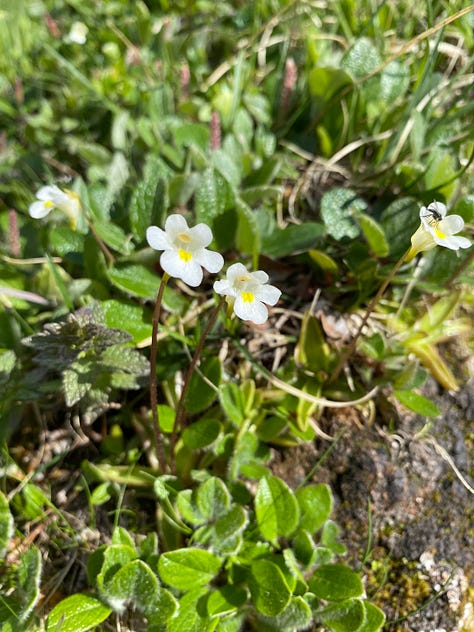
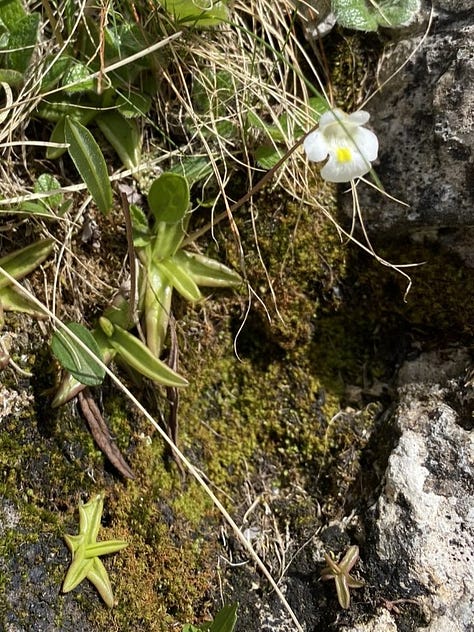
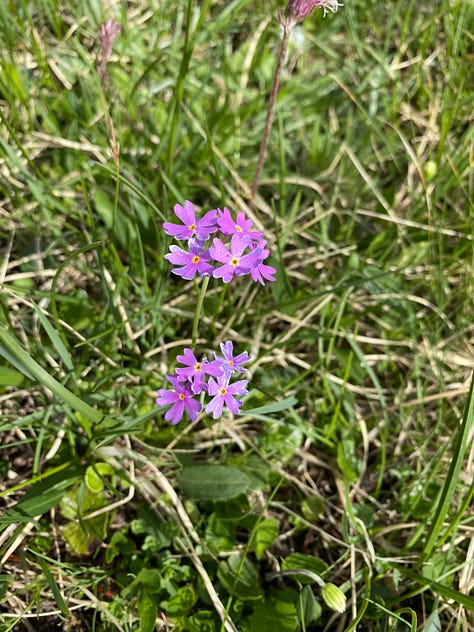


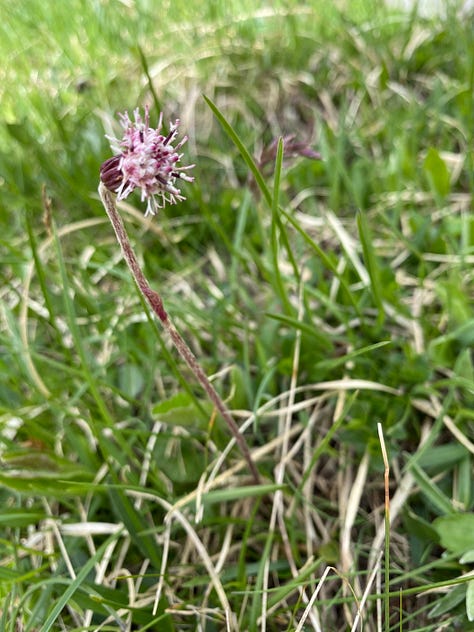

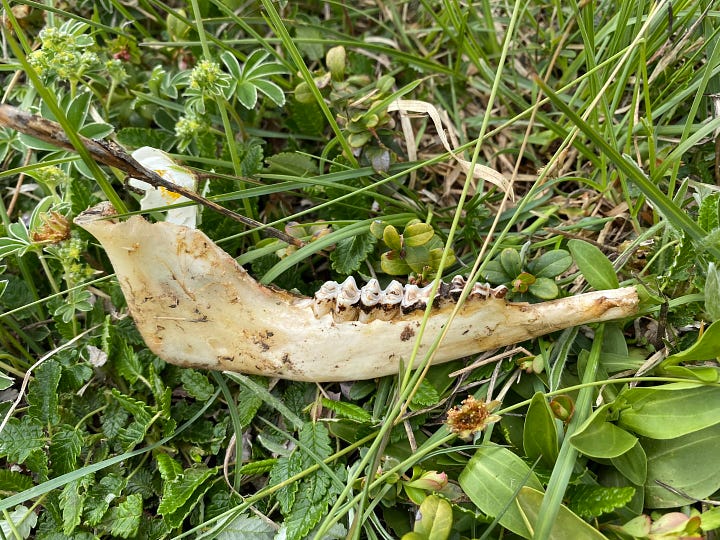
In the refuge, we were served a communal meal of thin vegetable soup followed by a venerable Savoyard specialty dating back to 1980s, Croziflette: a cross between the potato-Reblochon cheese gratin known as tartiflette, and confetti-like pasta squares called crozets.
There was no wifi or cell service, nor electricity in most of the refuge, so for the rest of the evening we sat outside and looked through a spotting scope at wildlife—a mother ibex and gamboling young, distant chamois, marmots surveying from their rocks, a golden eagle, and a lone male ibex far away with his huge curving horns—and the dark maw of an old lead-and-silver mine shaft high in the rock. As the evening settled, mist rose in the valley and drifted across the ridges; eventually, sunset tinged the filmy rafts of cirrus that slid in mesmerizing swirls just overhead.
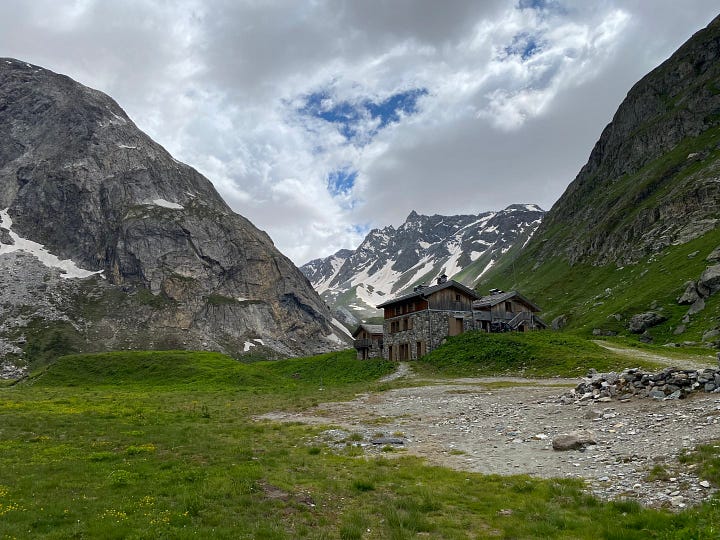
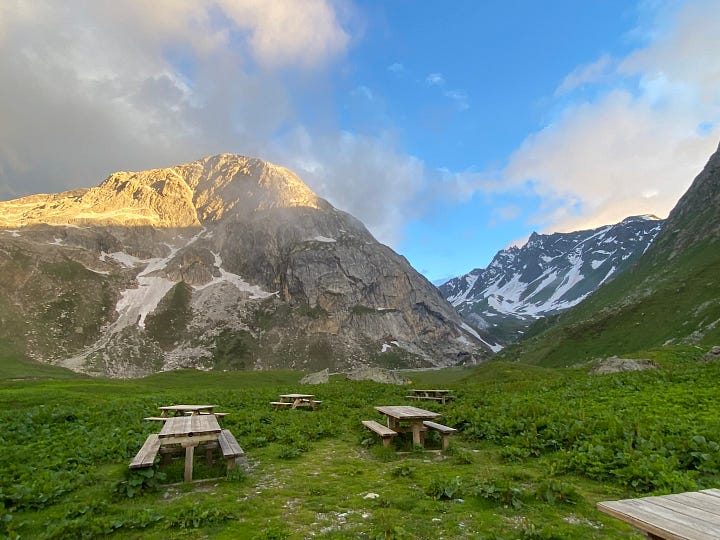
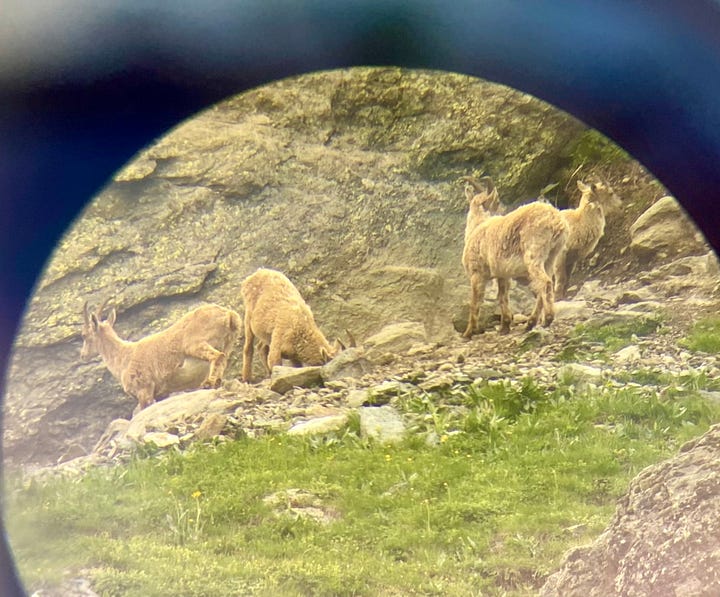
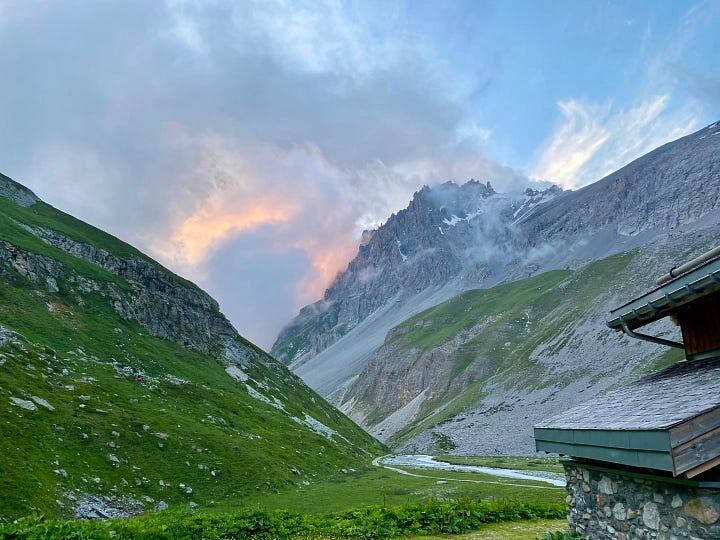
On the second day, we climbed up the gradient, following the glacial stream into the land of alpine spring. The first of the dainty purple Soldanella popped their fringed heads above the scant alpine carpet, almost sparkling in the sunlight. There were more gentians blotting the grass like indigo ink; fuzzy alpine pasqueflowers (Pulsatilla alpina) in full, decadent bloom, and spring pasqueflowers (Pulsatilla vernalis) still tightly budded and bowing; several delicate species of rock jasmine (Androsace) with white and pink flowers almost hidden in the grass (though we didn’t come across the Alps endemic, Androsace alpina, that the park is known for harboring); a tender moonwort fern (Botrychium lunaria) with its nascent sporangia stalk curled shyly inward; petite pink-flowered Primula; elegant white alpine Ranunculus; a cushion of moss campion (Silene) full of pink stars; sweet, simple purple Viola.
Fortunately for me, my tasks were simple (and to be honest, we were a bit overstaffed) and I had time to drift around photographing the flowers, asking Vincent for their names.
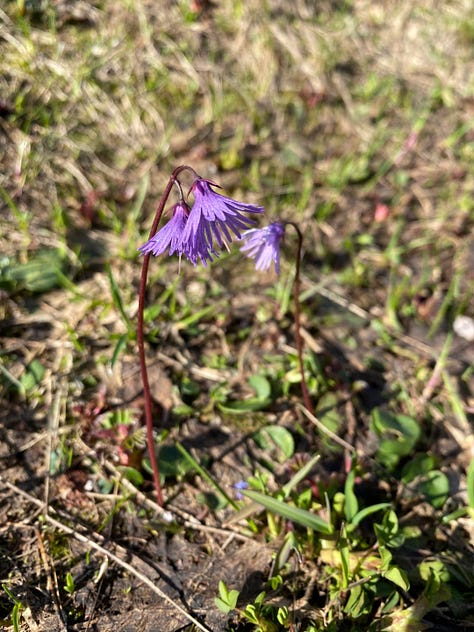
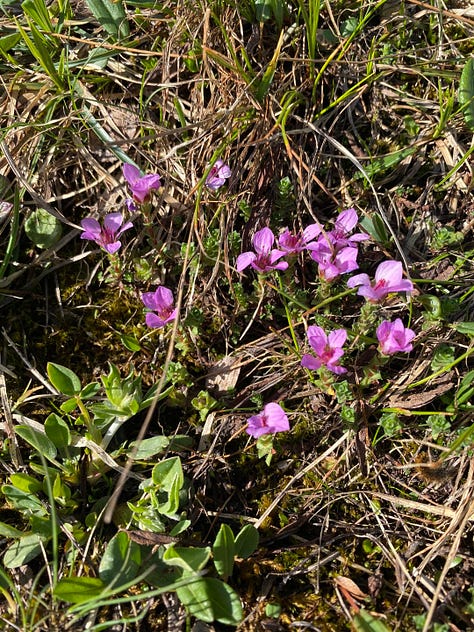
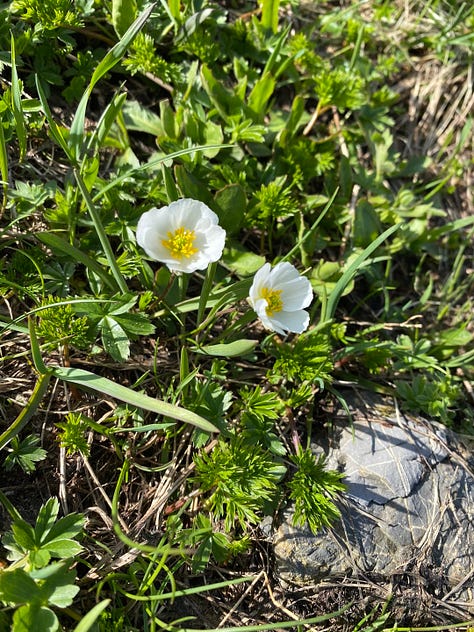
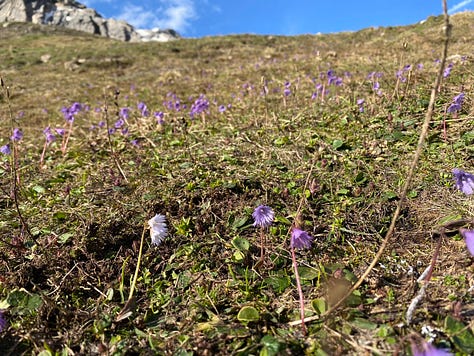
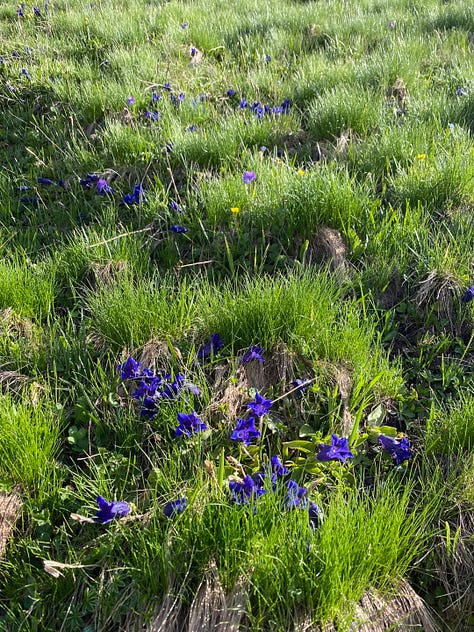
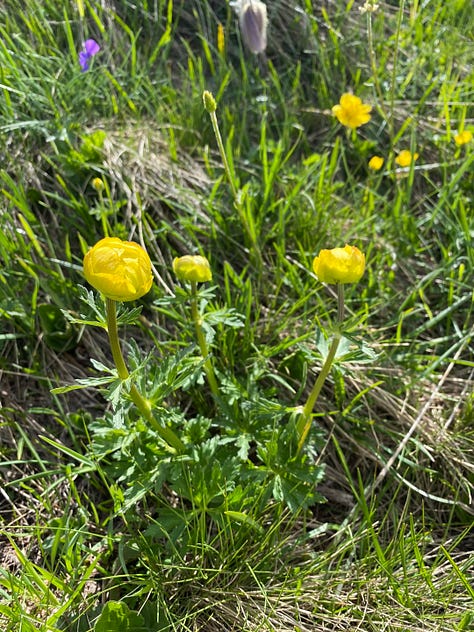
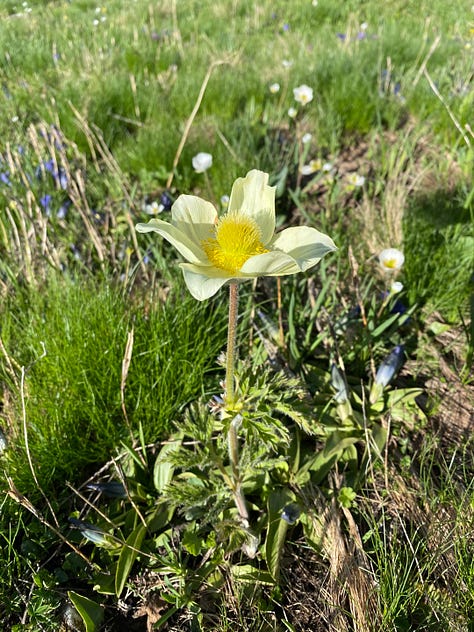
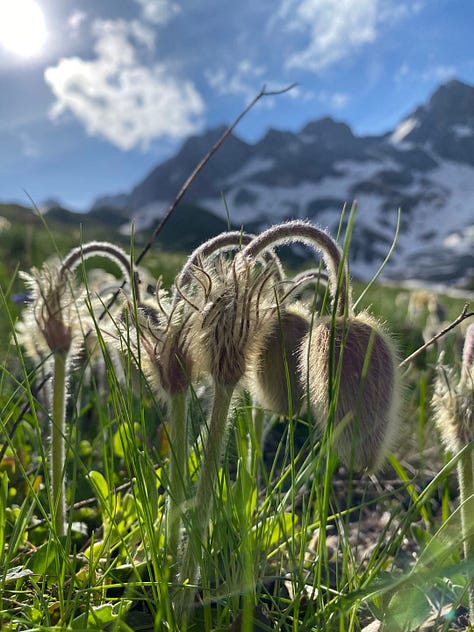

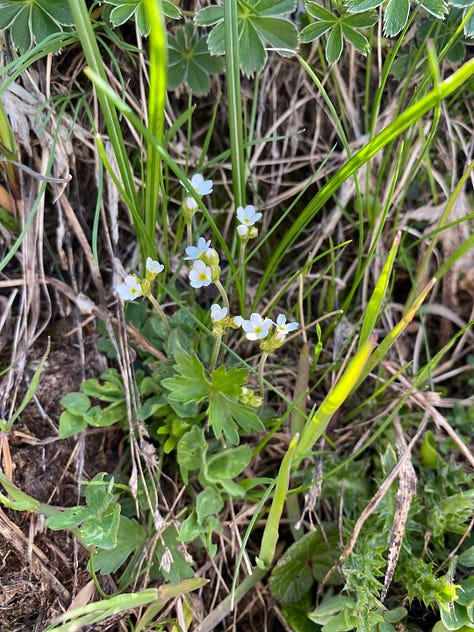

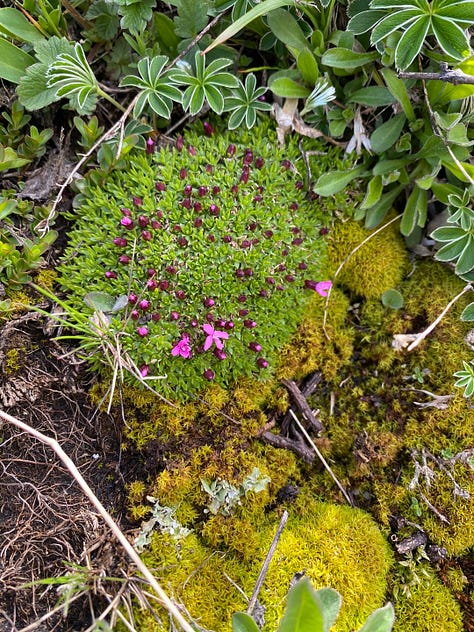
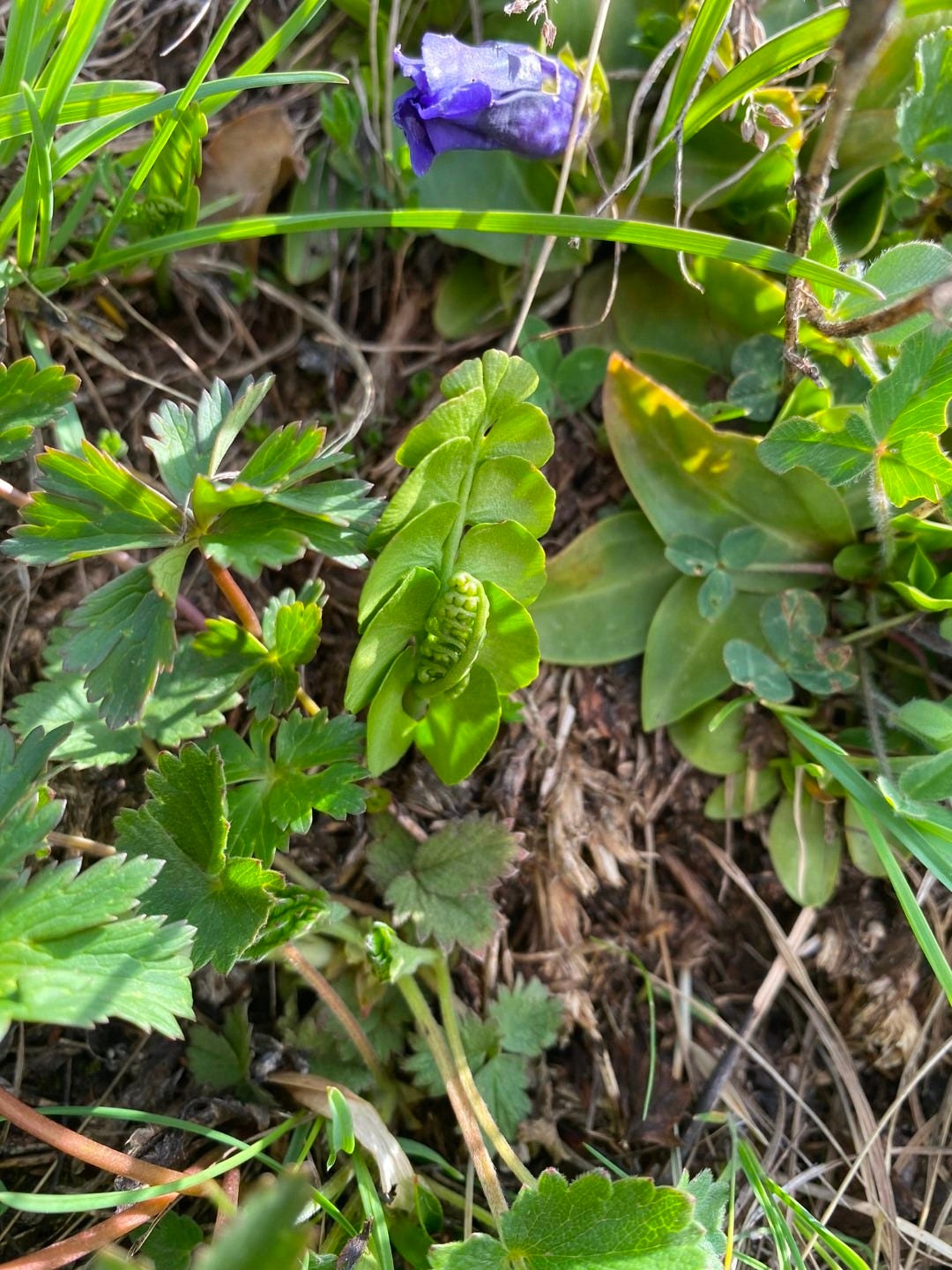

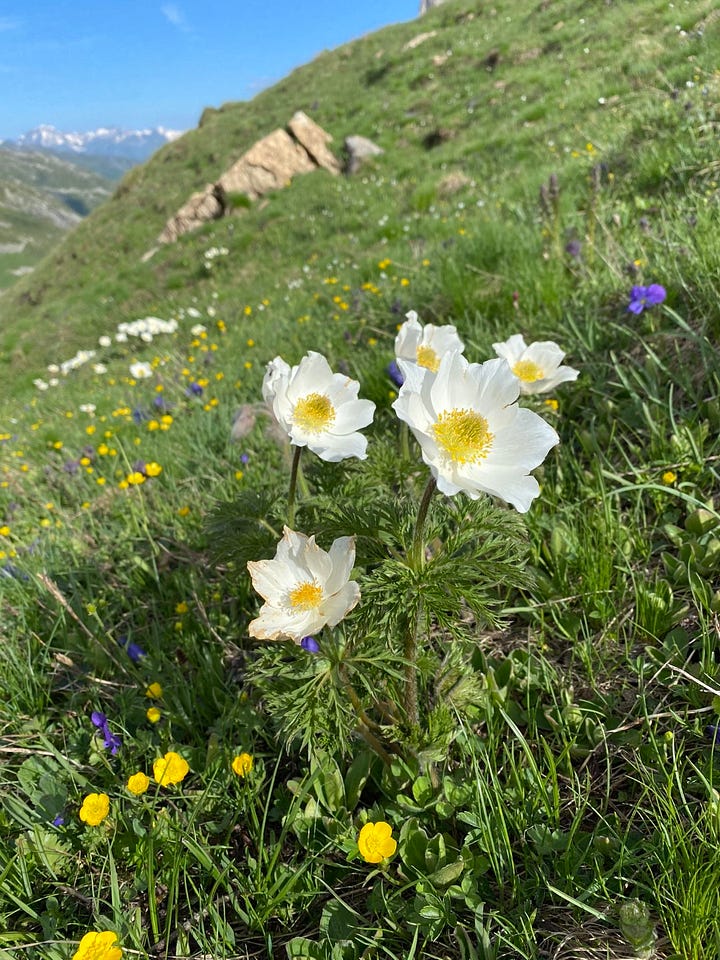


Fully in the heart of the park now, we crossed through alpine marsh and climbed higher into the realm of rock walls. At the top site, flanked by banks of snow, we had a direct sightline to Mont Blanc a few mountain ranges away, competing with the clouds. Closer at hand, our own slopes were a brilliant mosaic of snow and crag and glacier-ground fields of rock. I spent some time on google earth in 3D mode, trying to figure out which peaks exactly were ranged around us, and over which ranges the ominous storm clouds were gathering closer. Most peaks weren’t labelled. We were standing in the Col de Chanrouge, which despite the feeling of remoteness, was a well-traveled hiking crossroads. Nevertheless, being in a sort of peninsula in the western extreme of the park, the main attractions of Vanoise were screened from us—including Grande Casse, the highest peak (3855 m), and its mass of attendant peaks with glaciers in their teeth and lakes in their valleys.
Having seen such treasures already, the scope for further exploration is mouthwatering.
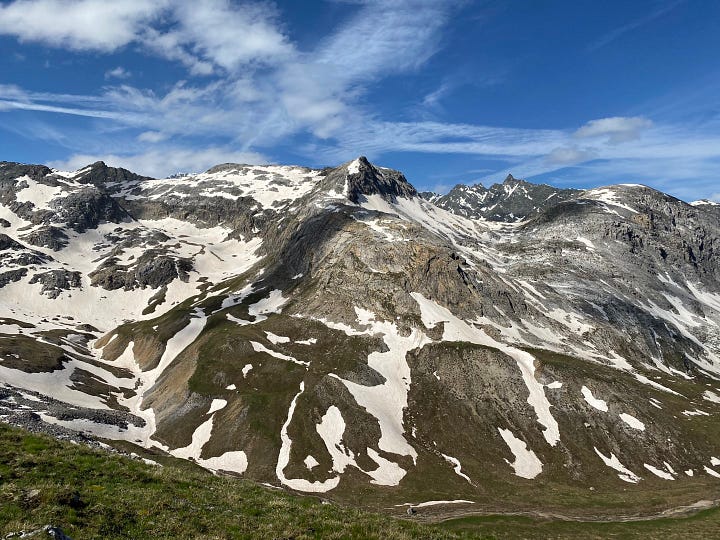
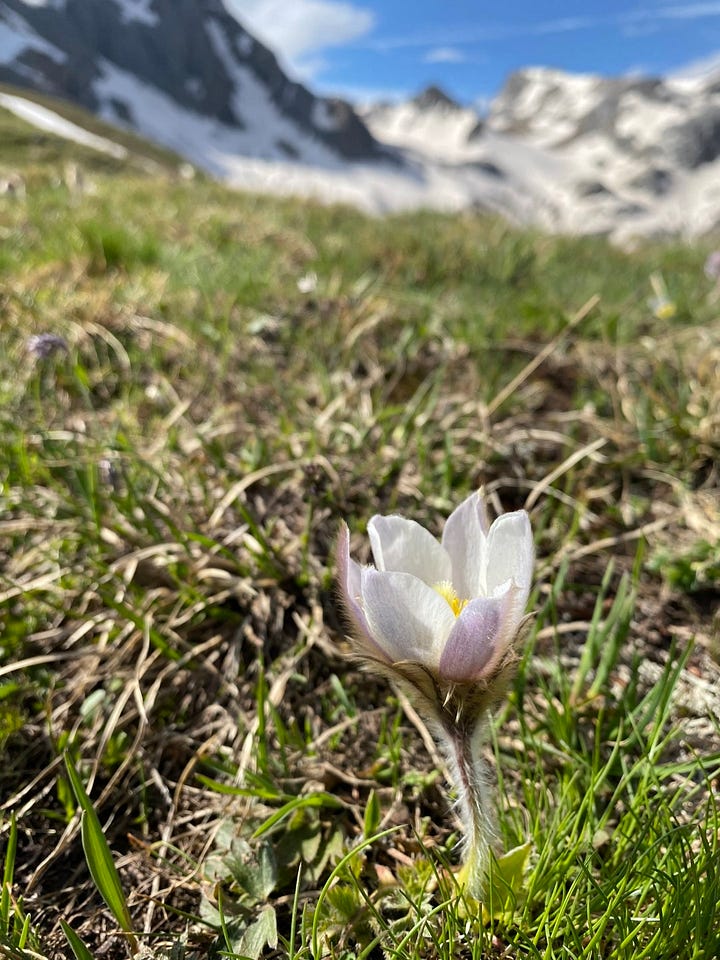
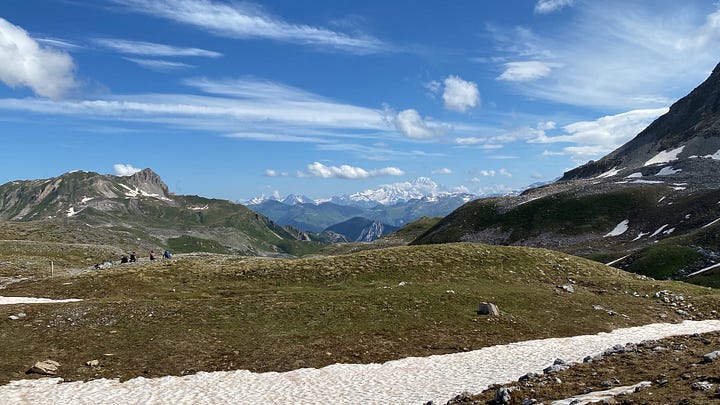

The boundaries of the park’s core, where protections limit activities to hiking and science, more or less hug the mountain ranges. This rugged landscape, while important habitat for flora and fauna, is also less habitable for humans to begin with. The main contenders for its use (besides hunting and timber harvest) are ski resorts, several of which (in fact, the largest interconnected area of ski resorts in the world including Courchevel) neighbor the park. Not long after the formation of the park in the 1960s, there was an intense debate about whether to allow a new resort to be built on a glacier within the core of the park, which fortunately failed to gain traction.
The valley floors, meanwhile, have remained human territory, initially voluntarily included in an “adhesion zone” where communes decided what protections to adhere to. The goal was to provide a buffer around the core where traditional human activities continued to shape the landscape at a low intensity. However, in 2015, 23 of the 26 communes, wanting more scope for development, decided not to renew their contracts, and the park shrank to its core.
But meanwhile, there is a thriving 3000-strong population of ibex, the largest in France, just as the original founders envisioned.
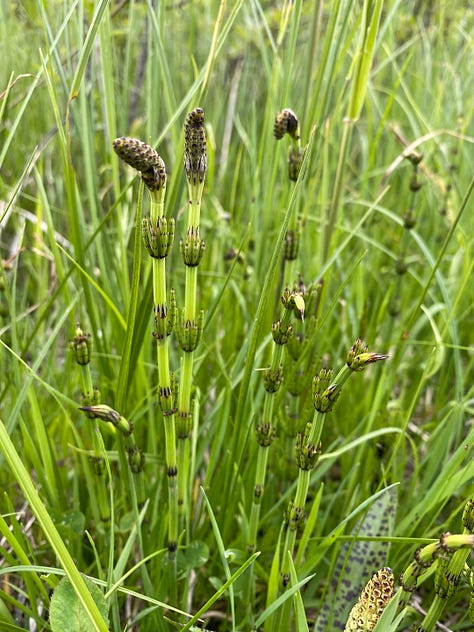
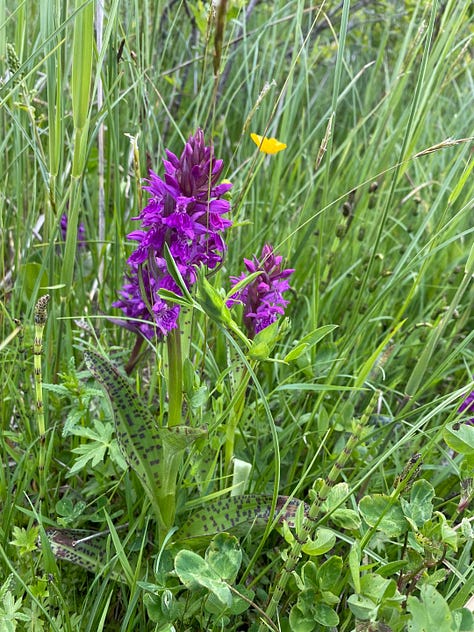
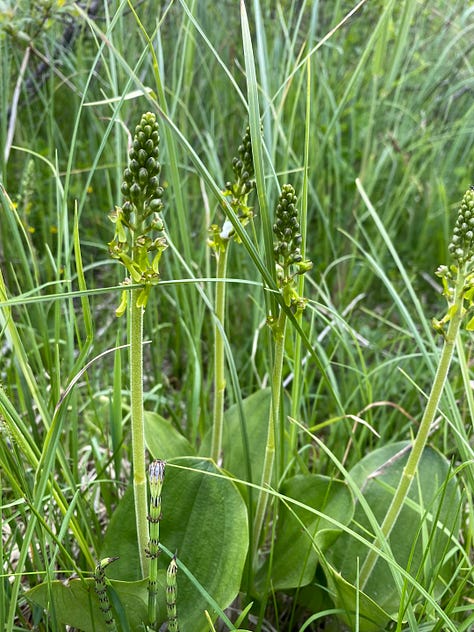
On our way home, back down in the valley nature reserve, we ate lunch by a pond, on which a group of student researchers were floating in a dinghy, surveying aquatic organisms. Along the pond’s edges, I found snazzy horsetails (Equisetum) and two kinds of orchid.
Quelle richesse!
I’ve also visited the Calanaques next to Marseille (which I wrote about here), and passed through Ecrins, just on the other side of Belledonne from Grenoble, during another field trip. The remaining five mainland parks are Port-Cros, les Pyrénées, les Cévennes, le Mercantour, and the Parc national de forêts. Three more are found in French territories: la Guadeloupe, La Réunion, and la Guyane.

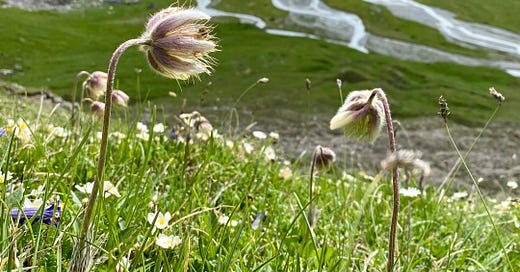




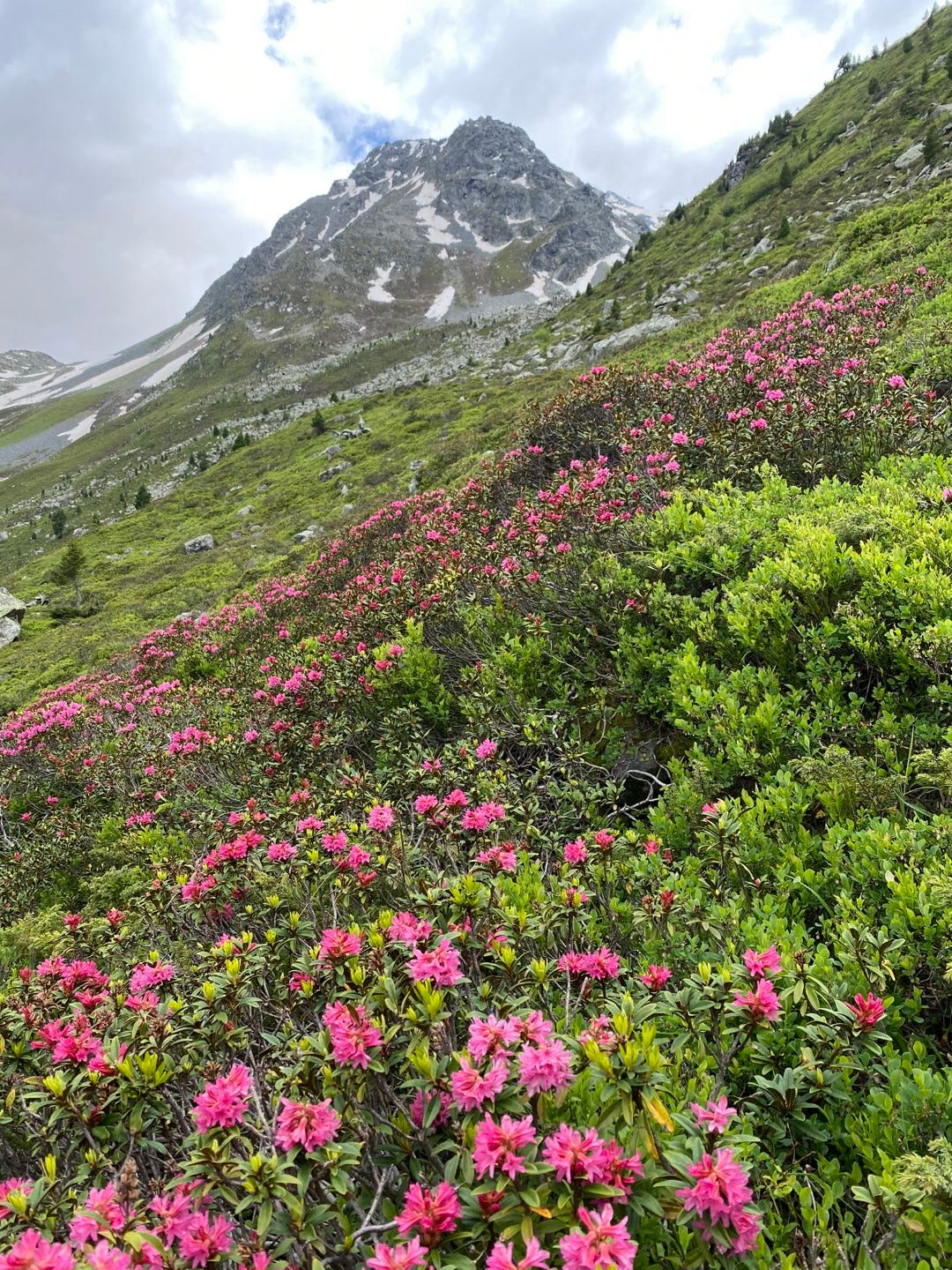



Just been in the Cévennes - a little bit boring to be honest... But shall be in Ref. du Saut in September! So thanks for the primer and preview, with luck some wildflowers will still be around.
Thank you, thank you for the wonderful photos of wildflowers and your engaging article. I've been thinking that if I ever make it to France again, that I'm more interested in visiting parks like these and seeing places in nature than visiting cities. Are you aware of any places that have old growth forests or ancient trees?